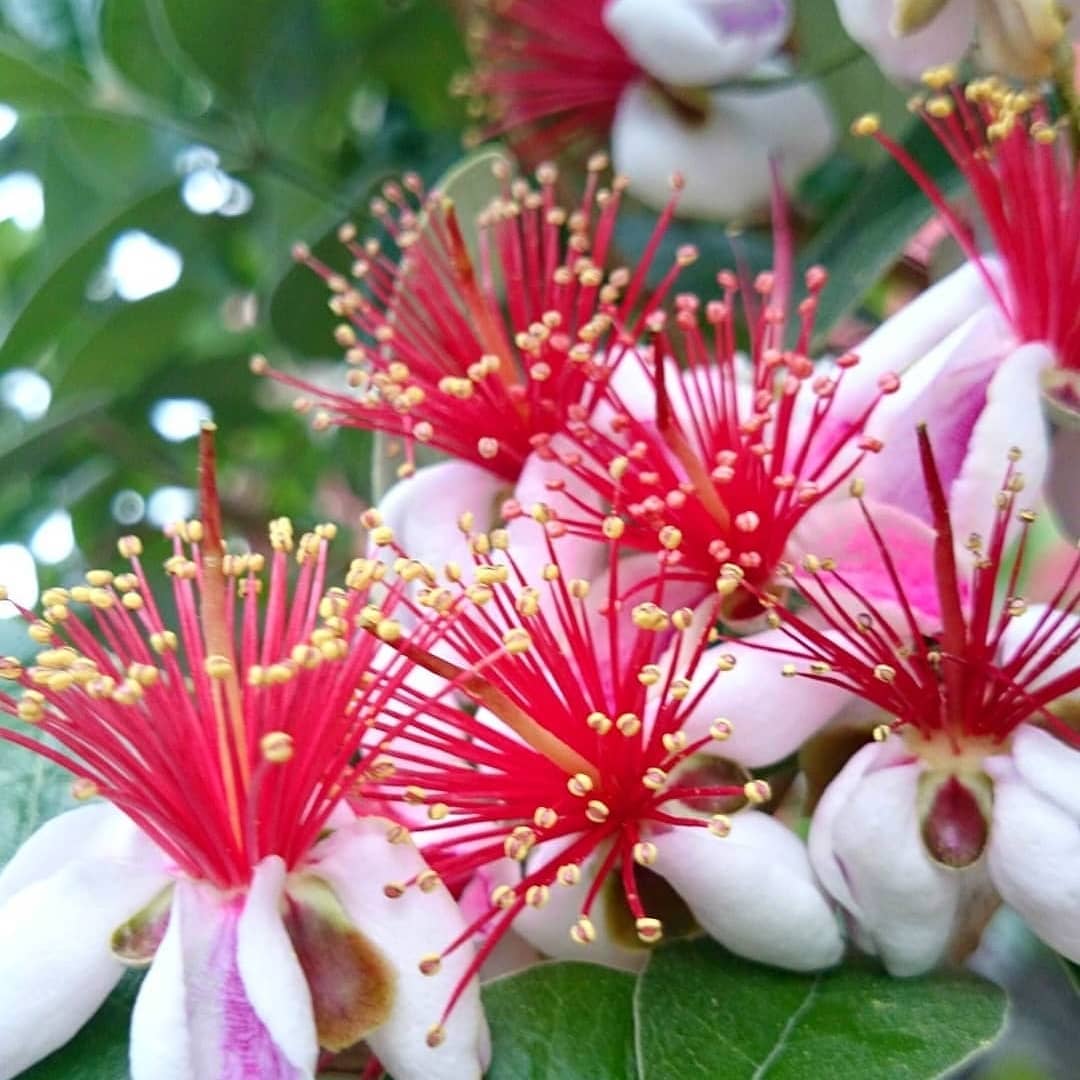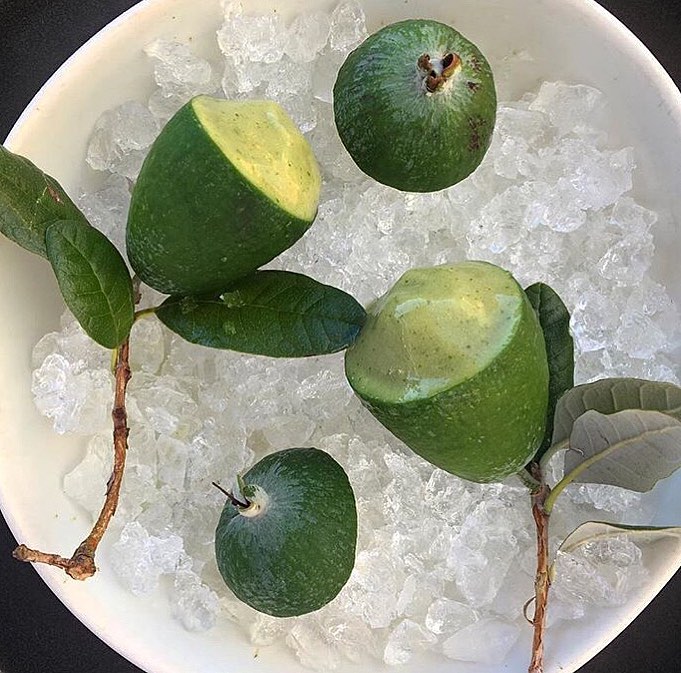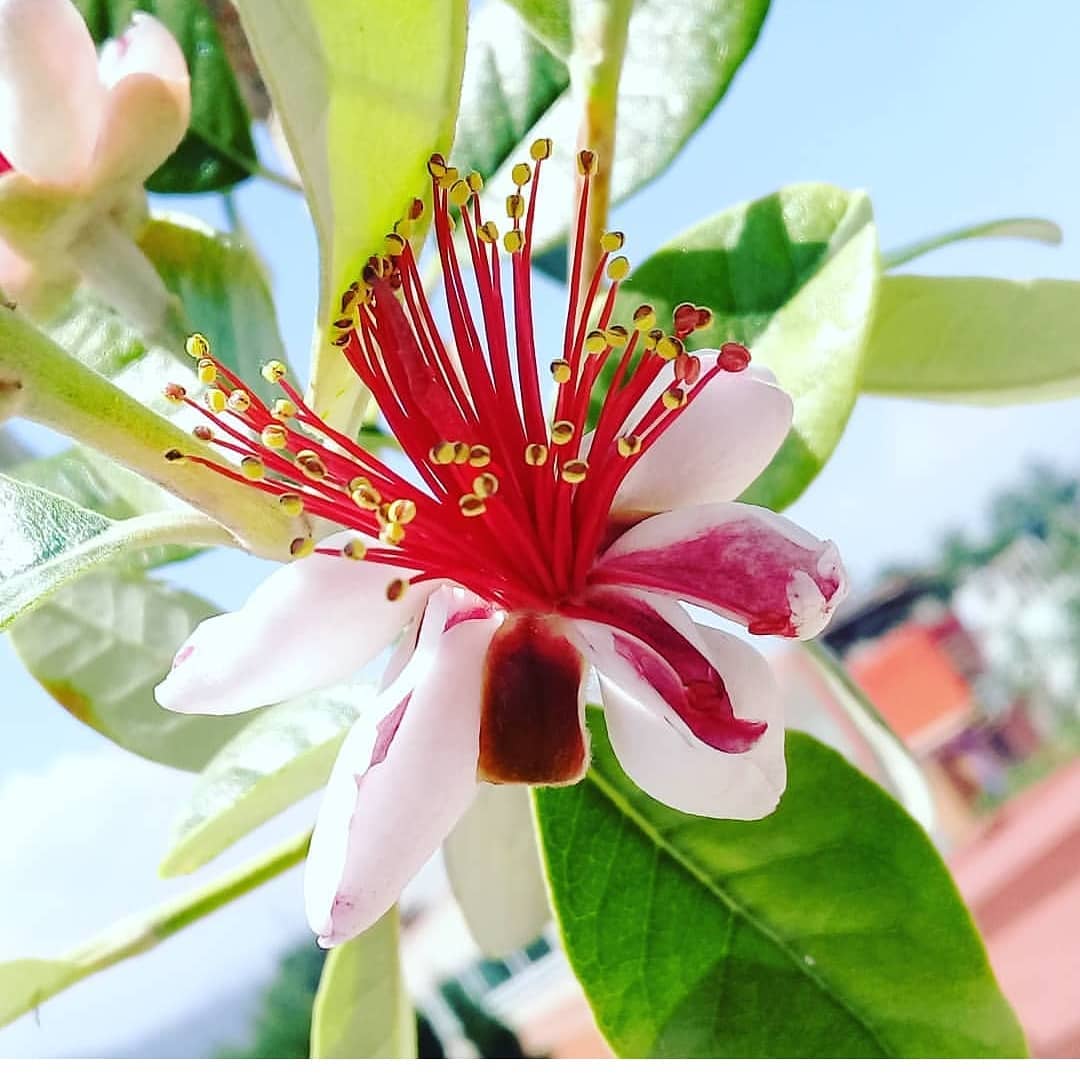
Feijoas in our apartment is evergreen (from the Myrtle family) comes from the humid subtropics of South America (Uruguay, Paraguay, southern Brazil and Northern Argentina), where it lives in the wild as a shrub or tree up to 3-4 m. Of the 6 known species only Akka feijoas included in the culture. The genus name, it was named after the Brazilian botanist de Silva Feijo. On the European continent, the plant first appeared in France (XIX century), and from there spread throughout Europe;
in Russia it fell by the same information only in 1899, the other in 1904 Feijoa is perfectly caught in the indoor flower, grows well and bears fruit, but the room is better to start to form, spray form, then the Mature plant will not exceed 1.2-1.5 m. young plants of feijoa grayish-yellow branches with opposite sitting leathery elliptical leaves that are dark green above and silvery white below, pubescent, with aromatic glands. Bisexual flowers are formed on branches of the current year: they are single or collected several (3-5) in axillary inflorescences, large (diameter up to 4 cm). Feijoa in our house
Flowers!
The form of flowers on long stalks are very beautiful: they have 4 thick fleshy reddish-white petals and numerous long red-purple stamens. It should be noted that feijoa is a monoecious plant, it can be parthenocarpic, self - and cross-pollinated depending on the variety, so experts suggest room for content to get the plants the first two groups (foreign Superba, Superba, Cooling or domestic Nikita fragrant, Adler large, the Crimean fragrant, Bumpy, Parostok 120). To obtain a good crop of fruit can not grow one plant feijoa cross-pollinated with type: at room conditions, it is desirable to have at least two plants of different varieties or inoculation.
Fertilization
For better fertilization in the evening is recommended to spray the flowers with water.After setting formed a small (20-30 g) greenish fruits are ovoid, pear-shaped or rounded shape (4-5 cm) flower Cup on top. Fruitlets green, reminiscent of cucumbers, which wags sometimes call this plant a "cucumber tree". In fact, in the ripe condition of their seeded fruit with a juicy, acidulous, refreshing flesh is pale cream colors have a consistency similar to gooseberries, and taste - pineapple and wild strawberry at the same time, so nothing to taste with the cucumber did not have.
Fruits
In some varieties the fruits are smooth, others rough, with a waxy bloom which gives them a smoky hue. Some varieties of fruit have "blush". Indoors immature fruits often fall off, after being held in a dark warm place for ripening.Feijoas are propagated mainly by seeds and by grafting, sometimes by cuttings, as the latter is very difficult to root. You should know that if the plants get through the seeds, they almost do not retain varietal characteristics of parents, since there is a strong splitting of the hereditary basis.
However, due to the ease of breeding this method is very popular among gardeners. After ripening choose the most ripe fruits; they are slightly dried, cut lengthwise into 2 parts and with a spoon scoop the jelly-like mass with seeds, which are left to ferment for 3-5 days. After this process, seeds are separated (washed) from the pulp on the strainer and dried at a temperature of 20°C. seed Germination is maintained for 1-2 years, so before planting them stored in a cool dry place (not above 5°C).Sow the seeds in February-March in a flat container and soil substrate using a mixture of equal parts of sand, turf and humus soil.
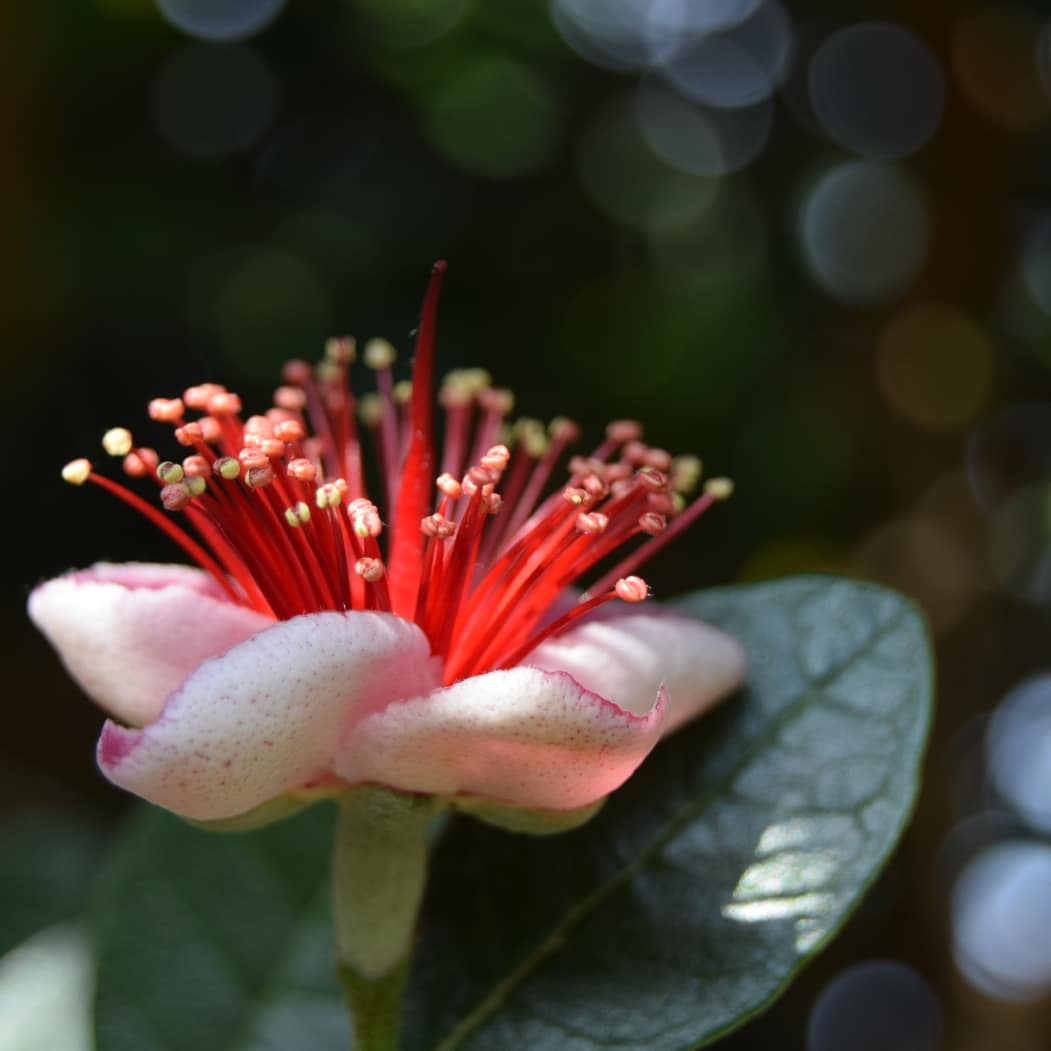
Soil
The soil before sowing should be well watered and compacted. Since the seeds are very small (100 g - more than 600 pieces), they only lightly sprinkled with sand. Some growers when sowing do differently: first, seeds are mixed with sand and then sown in the mixture located at a distance of 5-6 cm from each other grooves (depth 0.5 cm) that are lightly sprinkled with sand. The soil is watered from a watering can with a strainer through the filter or blotting paper which is placed on the surface of the soil, or sprayed from a spray. Before the emergence box better cover glass, the temperature was maintained below 24...25°C. the Emerged young plants are sprayed morning and evening with warm water, subsequently, they can also be used as rootstocks. Feijoa in our house
Feijoa in our house
For successful grafting in the room need constantly to temperatures below 26...28°C and high humidity and to provide adequate lighting (to illuminate a fluorescent lamp). As a rule, semilignified cuttings (8-10 cm long and a diameter of at least 0.5 cm) take the lower or middle tiers of the plant. To successfully rooting, the cuttings are kept for 12-16 h in a solution of IAA and planted in the box (soil of sand and humus in equal parts) of such a height that it can be a top cover glass or wrap. On the surface of the soil to place the water container - evaporating, it will maintain a high humidity. On rooting often takes more than 2 months - this will be evident in the appearance of the first shoots, but hurry "depressurization" of the greenhouse, and especially with transplant specialists do not recommend, better to hold it longer.
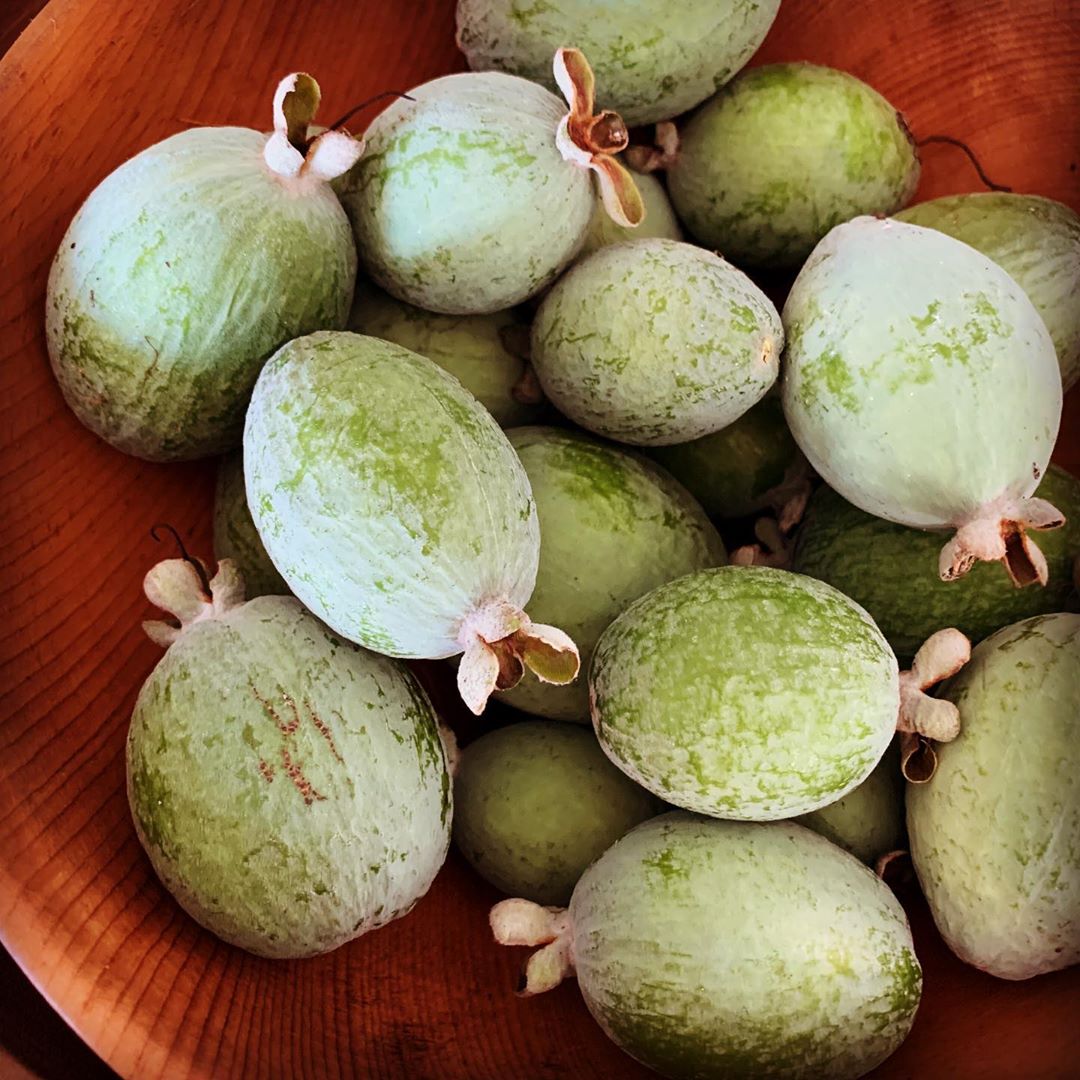
Great importance to the successful maintenance room culture feijoa is proper and timely formation of the young Bush. So, for example, I got under winter perennials decent height, with a large number of small branches that the formation of the bushes has caused many difficulties; especially failed to keep them at optimum winter temperature.
How to plant dill seeds and seedlings in the open ground, planting dates
How feed hydrangeas in the spring ?
